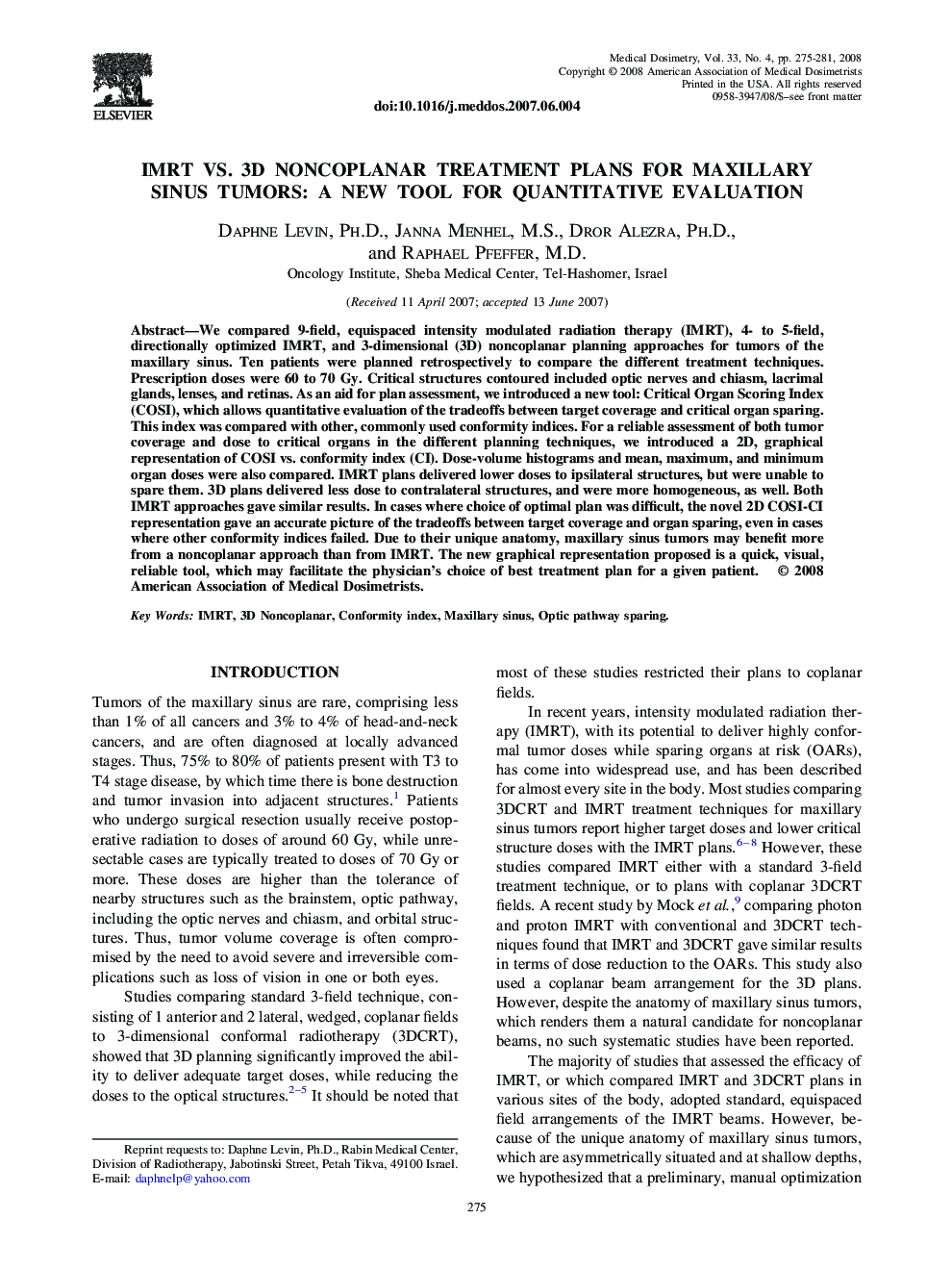| Article ID | Journal | Published Year | Pages | File Type |
|---|---|---|---|---|
| 1885468 | Medical Dosimetry | 2008 | 7 Pages |
Abstract
We compared 9-field, equispaced intensity modulated radiation therapy (IMRT), 4- to 5-field, directionally optimized IMRT, and 3-dimensional (3D) noncoplanar planning approaches for tumors of the maxillary sinus. Ten patients were planned retrospectively to compare the different treatment techniques. Prescription doses were 60 to 70 Gy. Critical structures contoured included optic nerves and chiasm, lacrimal glands, lenses, and retinas. As an aid for plan assessment, we introduced a new tool: Critical Organ Scoring Index (COSI), which allows quantitative evaluation of the tradeoffs between target coverage and critical organ sparing. This index was compared with other, commonly used conformity indices. For a reliable assessment of both tumor coverage and dose to critical organs in the different planning techniques, we introduced a 2D, graphical representation of COSI vs. conformity index (CI). Dose-volume histograms and mean, maximum, and minimum organ doses were also compared. IMRT plans delivered lower doses to ipsilateral structures, but were unable to spare them. 3D plans delivered less dose to contralateral structures, and were more homogeneous, as well. Both IMRT approaches gave similar results. In cases where choice of optimal plan was difficult, the novel 2D COSI-CI representation gave an accurate picture of the tradeoffs between target coverage and organ sparing, even in cases where other conformity indices failed. Due to their unique anatomy, maxillary sinus tumors may benefit more from a noncoplanar approach than from IMRT. The new graphical representation proposed is a quick, visual, reliable tool, which may facilitate the physician's choice of best treatment plan for a given patient.
Keywords
Related Topics
Physical Sciences and Engineering
Physics and Astronomy
Radiation
Authors
Daphne Ph.D., Janna M.S., Dror Ph.D., Raphael M.D.,
